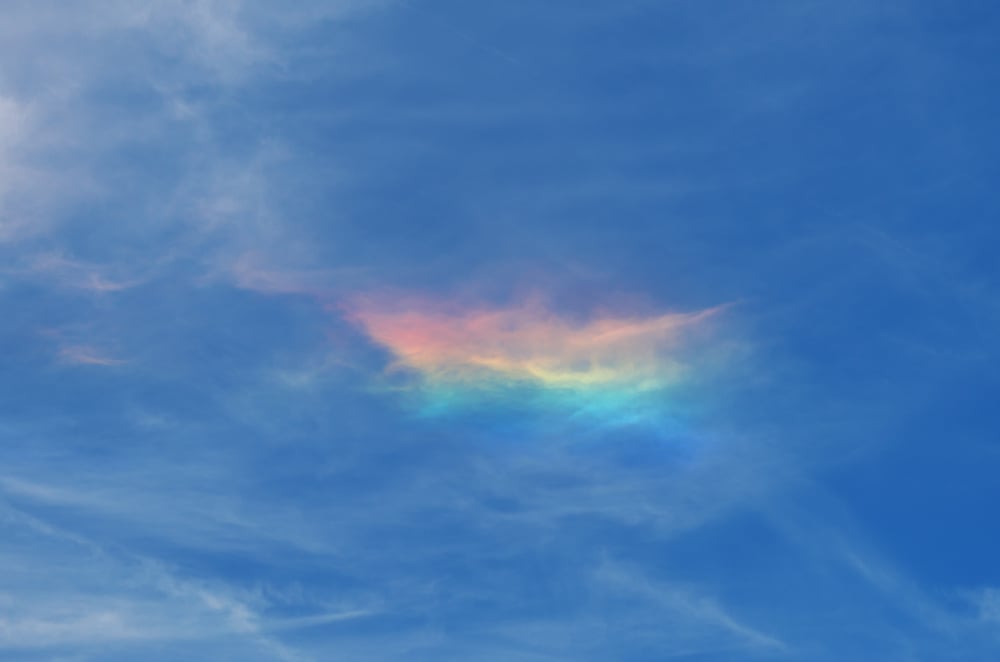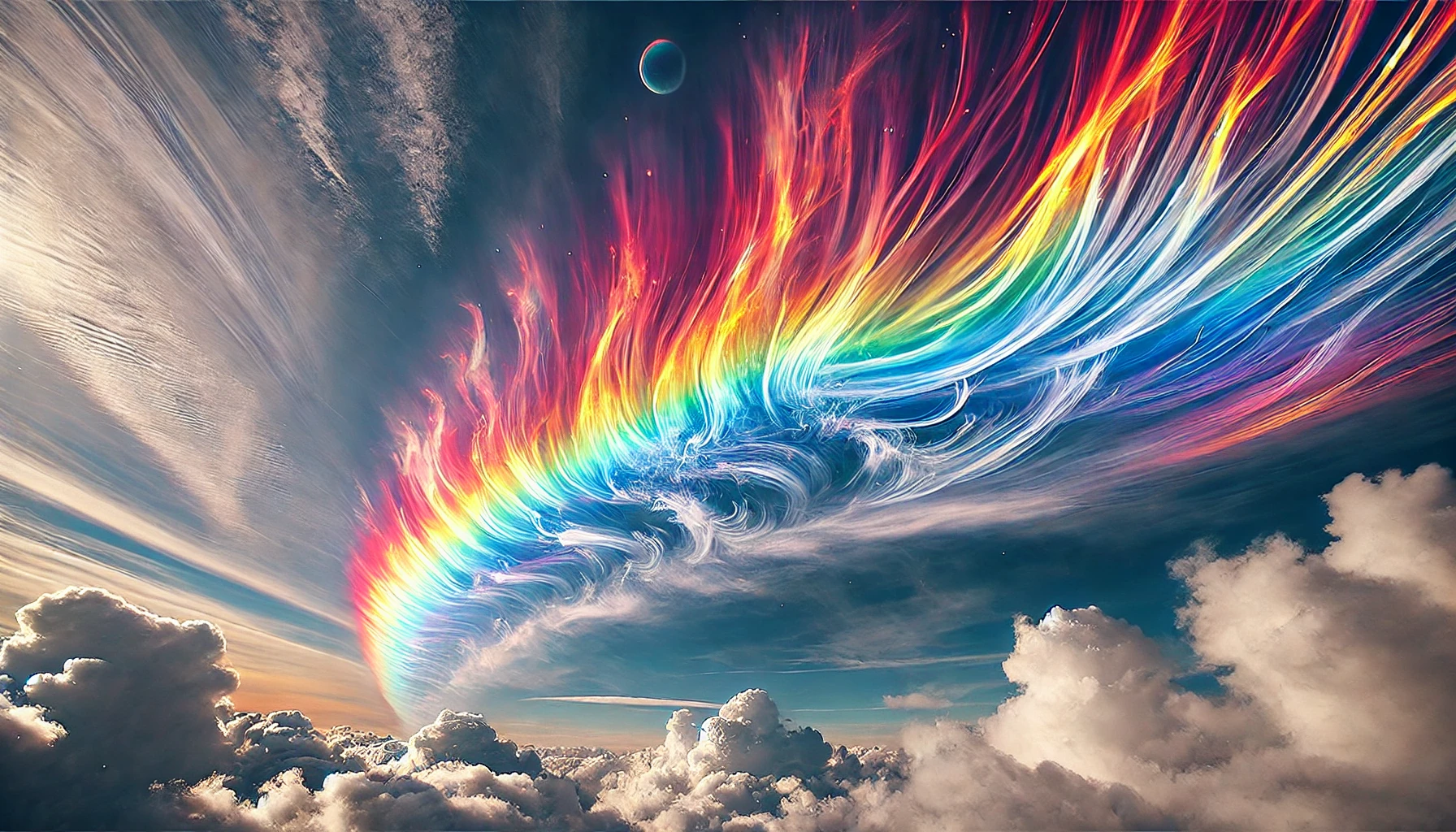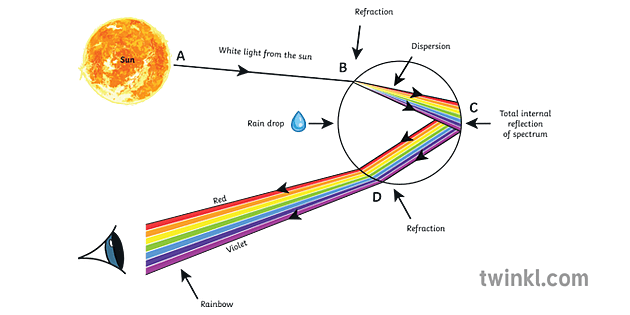Optimal Atmospheric Conditions for Fire Rainbows
Fire rainbows, scientifically known as circumhorizontal arcs, are rare optical phenomena that require very specific conditions to be observed. The foremost requirement is a high sun altitude—specifically, the sun must be at least 58° above the horizon. This high position ensures that sunlight enters the ice crystals in the correct orientation to create the effect[1][2]. In addition, the presence of high‐altitude cirrus clouds is essential. These clouds, which are typically located above 20,000 feet, are composed of hexagonal, plate‐shaped ice crystals that must be aligned horizontally. When these ice crystals are in the proper orientation, they act as natural prisms refracting sunlight into its constituent colors, resulting in the classic fire rainbow display[1][4]. Only under such specially aligned meteorological conditions—usually during the summer months in mid-latitude regions—can fire rainbows be observed, which is why they are rarely seen in locations closer to the poles[2][5].
Mechanism of Formation: Fire Rainbows vs. Regular Rainbows
The formation mechanism of fire rainbows differs significantly from that of regular rainbows. Fire rainbows are created when sunlight passes through the flat, horizontally aligned faces of hexagonal ice crystals in cirrus clouds. The light is refracted at roughly a 90° angle as it exits the crystal, which disperses the sunlight into a vivid horizontal band of colors. The outcome is an arc that is parallel to the horizon, with red typically appearing at the top and violet at the bottom, giving it a striking, flame-like appearance[1][3][4][7]. In contrast, regular rainbows form when sunlight enters spherical raindrops, where it is refracted upon entry, reflected off the inner surface, and refracted again when it exits. This process produces a circular or semicircular arc with a full spectrum of colors, which appears opposite the sun, usually after rainfall[2][6]. Thus, while both phenomena involve refraction and dispersion of light, the shapes of the refracting particles—flat ice crystals versus spherical water droplets—lead to markedly different optical outcomes.
Comparative Analysis of Atmospheric Conditions
The specific atmospheric conditions required for fire rainbows make them much rarer than regular rainbows. Fire rainbows demand a combination of high sun elevation, the presence of thin cirrus or cirrostratus clouds, and the perfect alignment of plate-shaped ice crystals. These conditions are not common, which means that even under clear skies, the window for observing a fire rainbow can be very fleeting[1][2][4]. Regular rainbows, on the other hand, typically occur after rain showers when water droplets are abundant in the lower atmosphere and the sun is at a lower angle. This makes regular rainbows more frequently observable in everyday weather compared to the precision required for fire rainbows[7][8]. In essence, while rainbows can be frequently seen in post-rain conditions, the rarity of high-altitude cirrus clouds combined with the strict sun altitude requirement accounts for the scarcity of fire rainbows.
Observational Implications and Visual Appearance
Due to the narrow conditions for formation, fire rainbows are most often described as ephemeral and breathtaking. Their appearance as a horizontal band of vibrant, flame-like colors is in stark contrast to the familiar curved arcs of regular rainbows[1][3][4][7]. With fire rainbows, the colors are arranged in a fixed horizontal order—red at the top descending through the spectrum to violet at the bottom—whereas regular rainbows generally present a more symmetrical, circular arc resulting from the geometry of raindrops[2][6]. Additionally, while regular rainbows occur in the presence of precipitation, fire rainbows require dry conditions with high-altitude ice crystals, making them independent of rainfall. This fundamental difference in the type of particles involved (water droplets versus ice crystals) leads to differences in both appearance and frequency of occurrence[1][4][7]. Moreover, fire rainbows can also occur when illuminated by moonlight, but the precision in their required conditions remains the same[3].
Get more accurate answers with Super Pandi, upload files, personalized discovery feed, save searches and contribute to the PandiPedia.
Let's look at alternatives:
- Modify the query.
- Start a new thread.
- Remove sources (if manually added).






